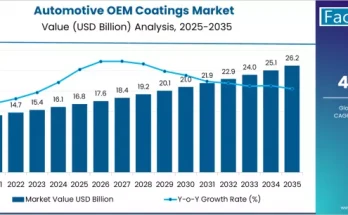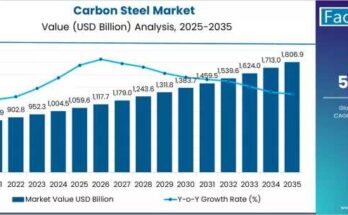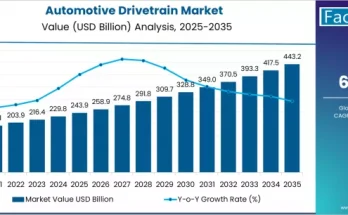The skid steer loader market is gaining strong momentum as industries increasingly adopt compact, efficient, and highly maneuverable equipment to enhance productivity across construction sites, landscaping projects, agriculture fields, and industrial operations. Skid steer loaders have evolved into indispensable machinery due to their versatility, adaptability, and ability to operate in confined spaces. With rising infrastructure development, expanding urban landscapes, and growing mechanization in agriculture, the demand for advanced skid steer loaders continues to climb.
Manufacturers are focusing on innovation—integrating improved hydraulics, enhanced operator safety features, and advanced control systems—to deliver high-performance machines that meet modern project requirements. The market is also witnessing rapid adoption of electric and hybrid variants as sustainability becomes a priority for industries worldwide.
Market Overview
Skid steer loaders are compact, engine-powered machines with lift arms designed to operate a variety of attachments. Their ability to turn within their own footprint makes them ideal for tight working environments where larger machinery cannot operate efficiently. Over the years, these loaders have undergone significant refinement in terms of power, comfort, and technological integration.
Key characteristics of skid steer loaders include:
- High maneuverability through zero-radius turning
- Compatibility with multiple attachments such as buckets, augers, pallet forks, trenchers, and sweepers
- Robust hydraulic systems for optimal lifting and digging performance
- Ease of transport due to compact structure
- Adaptability across terrain types, including mud, gravel, and uneven surfaces
Advancements in operator ergonomics, telematics, automation-ready features, and load-handling precision are reshaping the capabilities of modern skid steer loaders. Industries now rely on them not only for material handling but also for specialized tasks such as site grading, snow removal, excavation, debris clearing, and agricultural lifting applications.
Regional Insights
North America
North America remains one of the most prominent markets for skid steer loaders. The region’s widespread construction activity, robust agriculture sector, and preference for compact equipment significantly contribute to demand. High labor costs in the region further encourage adoption of mechanized solutions, making skid steer loaders essential equipment for contractors and landscapers.
Europe
Europe’s construction and industrial sectors are increasingly prioritizing efficiency, safety, and sustainability. Compact loaders with low emissions and noise levels are particularly favored due to strict regulatory standards. The region’s growing investment in urban redevelopment, transportation infrastructure, and green construction supports market expansion.
Asia-Pacific
Asia-Pacific is rapidly emerging as a growth hub for skid steer loaders. Massive infrastructure projects, rising industrialization, and continuous urban expansion create strong demand for compact machinery. Equipment rental markets are also expanding across countries like China, India, and Southeast Asia, where contractors often prefer renting skid steer loaders for short-term use.
Middle East & Africa
The Middle East & Africa region shows steady demand driven by construction, mining, and oilfield operations. Compact loaders are valued for their ability to operate efficiently in harsh environments and rugged terrains. Increasing development projects, along with rising mechanization in agriculture, contribute to future market potential.
Key Trends & Forecast
Growing Adoption of Electric and Hybrid Skid Steer Loaders
Electric skid steer loaders are gaining attention for their reduced emissions, lower noise levels, and minimal maintenance requirements. As industries aim to meet sustainability targets, manufacturers are introducing battery-powered models for indoor operations, urban construction, and environmentally sensitive locations.
Rise of Smart and Connected Equipment
Telematics, GPS tracking, machine health monitoring, and remote diagnostics are becoming standard features. These technologies help operators optimize maintenance schedules, track fuel efficiency, and improve overall productivity.
Increased Focus on Operator Safety and Comfort
Enhanced cabin ergonomics, improved visibility, vibration reduction, and intuitive control interfaces are shaping the next generation of skid steer loaders. Safety features such as rollover protection, rear-view cameras, and advanced braking systems are becoming increasingly common.
Expansion of Attachment Versatility
Manufacturers are continuously expanding the range of attachments available for skid steer loaders. This versatility enables a single machine to handle numerous tasks—reducing the need for multiple specialized equipment.
Growth in Rental Equipment Demand
The global shift toward equipment rental is influencing market dynamics. Contractors prefer renting skid steer loaders for specific projects to reduce ownership costs. This trend is particularly strong in developing regions where capital investments in heavy machinery are often limited.
Applications & End-Use Outlook
Construction
Construction companies rely heavily on skid steer loaders for material movement, grading, trenching, demolition debris handling, and site preparation. Their compact size and flexibility make them ideal for both residential and commercial construction projects.
Agriculture
In agriculture, skid steer loaders support tasks such as loading hay bales, cleaning barns, transporting feed, and excavating small plots. Their ability to attach farming-specific tools makes them essential for modern farm operations.
Landscaping & Forestry
Skid steer loaders are crucial in landscaping projects for tasks like soil preparation, tree planting, stump grinding, and hydroseeding. Forestry operations also utilize them for clearing brush and handling logs.
Industrial & Warehousing
Industrial facilities use skid steer loaders for material handling, waste management, and transport of supplies. Their compact frame allows them to navigate warehouses and loading areas with ease.
Municipal Services
Municipalities employ skid steer loaders for snow removal, road maintenance, waste clearing, and urban infrastructure work, thanks to their year-round usefulness.
Conclusion
The skid steer loader market is evolving rapidly as industries prioritize productivity, versatility, and sustainability in their operations. With growing emphasis on technological innovation, enhanced operator safety, and environmental responsibility, skid steer loaders are becoming more advanced and increasingly essential across a wide range of applications.
As global infrastructure development expands and mechanization gains momentum in construction, agriculture, and industrial sectors, the demand for high-performance skid steer loaders is set to strengthen. Manufacturers that continue to innovate in areas such as electrification, automation, and multi-functional attachment design will be at the forefront of shaping the future of this dynamic market.
Browse Full Report – https://www.factmr.com/report/389/skid-steer-loader-market



